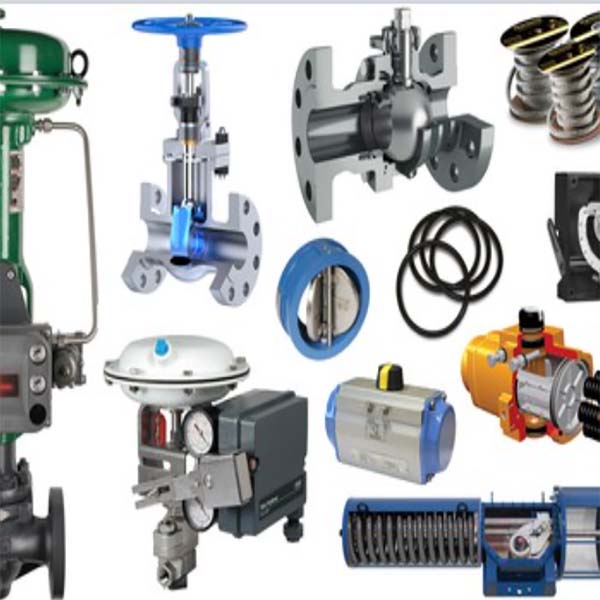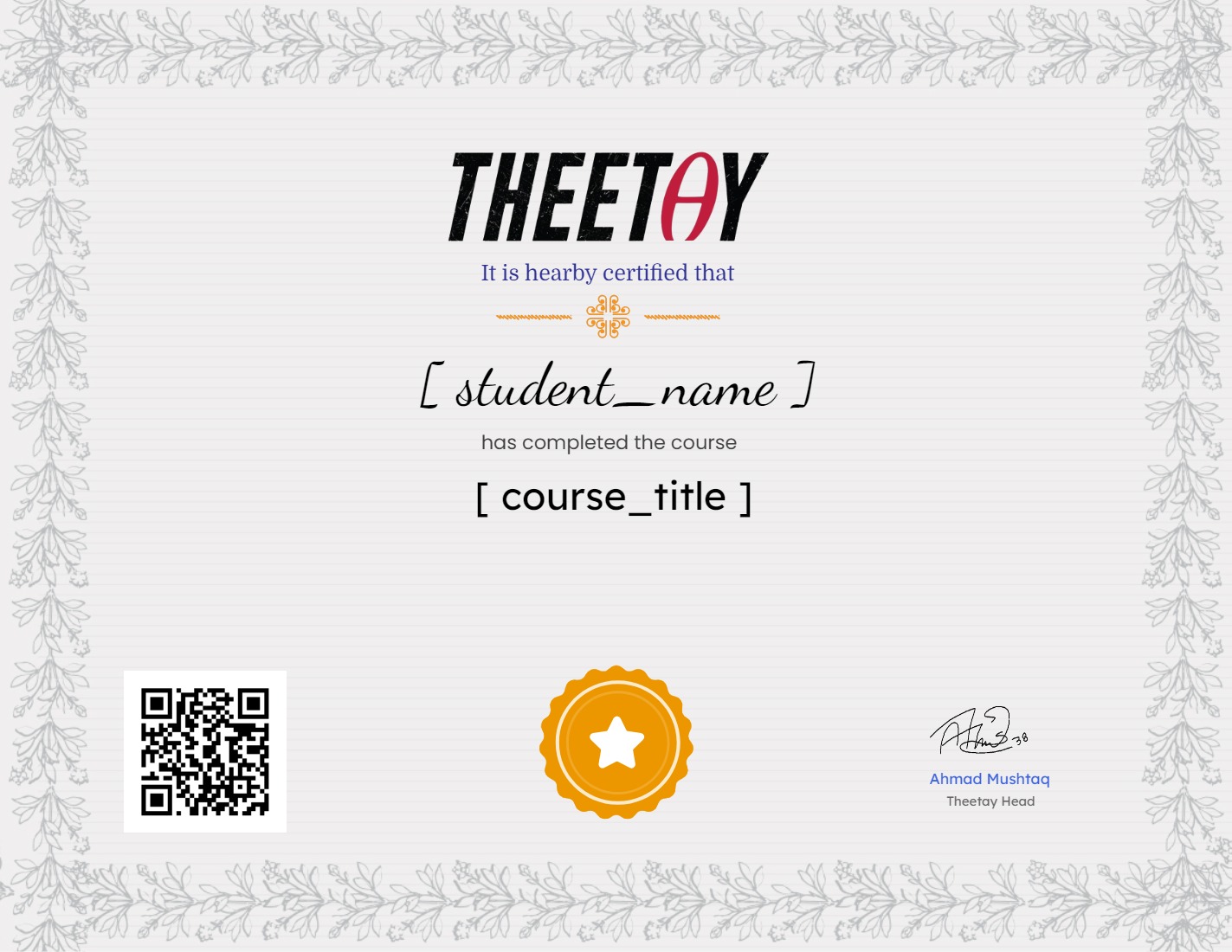Valve & Control Valve Masterclass: Design Selection & Sizing

About Course
Master the intricacies of valves and control valves with this comprehensive 12-hour masterclass, available completely free of cost. This course, offered on platforms like Udemy, Udacity, Coursera, MasterClass, NearPeer, and more, provides a thorough understanding of valve construction, functionality, and applications in various industries, including refining, petrochemical, process, power generation, and environmental engineering.
Gain a deep dive into a wide range of valve types, including gate, globe, and ball valves, as well as control valves, actuators, positioners, and more. Explore the working principles and construction details of these essential components through extensive graphics, 3D animations, and cross-sectional views, offering a virtual practical experience.
This masterclass is structured into four parts:
- Part I: Valves: Discover the major valve types used in the process industry, learn their components, function, and operation, and experience dismantling and assembling various valves using 3D models, cross-sectional views, and animations.
- Part II: Control Valves, Actuators, and Positioners: Delve into the working principles and construction details of control valves, including sliding stem and rotary types, mixing and diverting 3-port control valves, and various actuators like diaphragm, piston, rack-and-pinion, and Scotch yoke.
- Part III: Sizing and Selection: Master the valve sizing procedure through practical examples and a step-by-step methodology. Learn how to determine the flow coefficient (Cv), predict maximum flow rate, and understand the impact of pressure differential on valve lift and actuator operation.
- Part IV: Valves in Engineering Drawings: Gain familiarity with valve symbols and representations in engineering drawings, including Piping & Instrumentation Diagrams (P&IDs), and learn how to depict valve status and failure modes.
This course also includes a comprehensive quiz with 500+ questions covering true/false, multi-choice, image-based questions, cross-sectional views, and solved problems. This engaging quiz will help you test your knowledge and solidify your understanding of key concepts.
Whether you’re a process engineer, instrument technician, or simply interested in learning more about valves and control systems, this free masterclass will provide you with the foundation necessary to succeed in your field.
Key Features:
- Complete understanding of valve construction and functionality
- Extensive graphics, 3D animations, and cross-sectional views for visual learning
- Practical examples and solved problems for real-world application
- Valuable Valve Sizing Excel Spreadsheet for performing calculations
- Comprehensive quiz (500+ questions) to test your knowledge
- Free of cost access to high-quality online courses
Keywords: Valves, Control Valves, Actuators, Positioners, Valve Sizing, Engineering Drawings, P&IDs, Process Industry, Refining, Petrochemical, Power Generation, Environmental Engineering, Free Online Courses, Udemy, Udacity, Coursera, MasterClass, NearPeer
What Will You Learn?
- Understand valves and control valves working principles for successful operation of your plant and piping systems
- Understand valve construction details (bonnet, stem, disk, seat, packing, body, etc)
- Know the characteristics and applications for each valve type (ball, plug, gate, pinch, butterfly, diaphragm, check, needle...)
- Know how to choose the correct valve for a certain application
- Know how to dismantle and assemble all types of valves using 3D and 2D models
- Identify and know the principles of operation of common valve actuators (pneumatic, hydraulic, electrical, etc)
- Understand how single acting and double acting pneumatic actuators work through graphics and 3D animations
- Understand the principle of fail open (FO) and fail close (FC) actuators
- Know how to convert a single acting spring return actuator to a double acting actuator and vice versa
- Know how to convert a fail close actuator to a fail open actuator and vice versa
- Be more innovative in your solutions to valve and control valve problems
- Have an organized approach to the procedure of valve sizing in accordance with the ANSI & ISA recommendations
- Be able to size valves for any flow conditions likely to be found in a process plant
- Have a general notion about the confidence to be placed in the sizing result conclusions
- Understand safety valve manufacturers’ literature better and understand their jargon
- Become more aware of the potential benefits and pitfalls of the currently available safety valve technology
- Understand the concept of "Air-to-push-up" and Air-to-push-down"
- Understand the concept of "direct-acting" and "reverse-acting"
- Know how to convert a fail close actuator to a fail open actuator and vice versa
- Understand the concept of valve flow coefficient "Cv" and familiarize yourself with the various units
- Know how to determine flowrate and pressure drop through control valves for different valve lifts
- Know how to match the valve characteristics to the process
- Know how to construct the installation curve for a given control valve
- Understand the effect of selecting a control valve larger than necessary
- Understand the effect of differential pressure on the valve lift and actuator operation
- Differentiate between fast opening, linear and equal percentage valve characteristics
- Understand how valve positioners operate
- Know the different types of valve positioners (P/P, I/P, force balance, motion balance, digital…)
- Understand when a positioner should be fitted
- Understand the working principles of I/P converters and how they are used in control valves
- Put your knowledge to the test at the end of each section with a valuable technical quiz (500+ questions and solved problems)
- Download our valuable Valve Sizing Excel Spreadsheet (included in this course free of charge)
Course Content
Valves functions and basic parts
-
A Message from the Professor
-
Valves functions and basic parts Learning objectives
00:54 -
Introduction
01:56 -
Valve body
02:13 -
Valve bonnet
01:44 -
Valve trim
01:24 -
Disk and seat
02:07 -
Stem
02:29 -
Valve actuator
01:04 -
Valve packing
01:39 -
Introduction to the types of valves
02:45 -
Before you proceed to the next section
01:17 -
Course Material Download Link
00:00
Types of valves
-
Types of valves Learning objectives
00:54 -
Gate valves
02:50 -
Gate valves 3D dismantling
00:59 -
Gate valves 2D dismantling
01:04 -
Gate valves Disk design
06:59 -
Gate valves Stem design
02:03 -
Gate valves Seat design
01:55 -
Globe valves
03:31 -
Globe valves 3D dismantling
00:57 -
Globe valves 2D dismantling
01:04 -
Globe valves Z-body design
01:13 -
Globe valves Y-body design
02:00 -
Globe valves Angle design
01:08 -
Globe valves Disk design
01:26 -
Globe valves Disk – Stem connections
00:30 -
Globe valves Seat design
00:54 -
Globe valves Direction of flow
01:04 -
Ball valves
01:07 -
Ball valves Components
01:29 -
Ball valves 3D dismantling
00:47 -
Ball valves 2D dismantling
00:49 -
Ball valves Actuators
00:53 -
Ball valves Pros & Cons
00:52 -
Ball Valves Port pattern
00:22 -
Ball valves Valve materials
01:04 -
Ball valves Stem design
00:56 -
Ball valves Valve position
01:19 -
Plug valves
01:05 -
Plug valves Valve components
00:57 -
Plug valves 3D dismantling
00:43 -
Plug valves 2D dismantling
00:45 -
Plug valves Numerous designs
00:23 -
Plug valves Plug designs
01:47 -
Plug valves Multiport plug designs
03:35 -
Plug valves Lubricated design
03:26 -
Plug valves Non-Lubricated design
01:26 -
Plug valves Gland design
01:21 -
Diaphragm valves
03:26 -
Diaphragm valves 3D dismantling
00:55 -
Diaphragm valves 2D dismantling
00:56 -
Diaphragm valves Straight through & weir types
01:54 -
Diaphragm valves Diaphragm construction
02:53 -
Diaphragm valves Bonnet design
01:49 -
Pinch valves
02:41 -
Pinch valves Body design
02:18 -
Butterfly valves
04:49 -
Butterfly valves 3D dismantling
00:57 -
Butterfly valves Seat design
01:28 -
Butterfly valves Disk & Stem assembly
01:23 -
Needle valves
02:05 -
Needle valves 3D dismantling
00:50 -
Needle valves Valve applications
00:26 -
Needle valves Body design
00:53 -
Needle valves Stem packing
00:26 -
Check valves
00:55 -
Check valves Swing
04:09 -
Swing check valves 3D dismantling
00:38 -
Swing check valves 2D dismantling
00:49 -
Assembling a swing check valve – 3D model
00:42 -
Tilting disk check valves
01:48 -
Lift check valves
02:29 -
Lift check valves 3D dismantling
00:39 -
Lift check valves 2D dismantling
00:45 -
Piston check valves
01:38 -
Butterfly check valves
03:00 -
Stop check valves
00:51 -
Before you proceed to the next section
01:17
Safety and Pressure Relief Valves – Design fundamentals
-
Pressure Relief Valves Introduction
03:15 -
Types of devices
07:26 -
Useful terminologies
06:02 -
Relief and Safety valves
02:18 -
Safety valves
05:41 -
Safety valves Pressure setting
02:31 -
Safety valves 3D dismantling
01:31 -
Safety valves 2D dismantling
01:33 -
Relief valves
03:18 -
Relief valves Valve operation in 2D cross-sectional view
01:41 -
Relief valves 3D dismantling
00:57 -
Relief valves 2D dismantling
01:00 -
More on spring loaded design
05:08 -
More on spring loaded design 3D animation
01:39 -
Material of construction
01:15 -
Back pressure considerations
06:49 -
Dynamic back pressure (built-up back pressure)
01:31 -
Seat leakage
02:04 -
Testing safety valves with air or nitrogen
08:41 -
Before proceeding to the next section
00:30
Steam traps
-
Overview of steam traps
01:12 -
Floating traps
03:29 -
Thermostatic traps
03:51 -
Thermodynamic traps
04:49 -
Inverted bucket traps
05:26 -
Before you proceed to the next section
01:17
Strainers
-
Overview
00:44 -
Wye strainers
02:11 -
Basket strainers
02:03 -
Before you proceed to the next section
01:17
Control valves
-
Control valves overview
04:08 -
Control valves Trim arrangement
01:27 -
Control valves Direction of action
02:21 -
Control valves 3D dismantling
01:32 -
Control valves 2D dismantling
01:24 -
Before you proceed to the next section
01:17
General considerations
-
General considerations Introduction
01:18 -
Two-port valves
06:01 -
Shut-off tightness
01:45 -
Balanced single seat
01:48 -
Slide valves – Spindle operated
02:14 -
Rotary valves
03:57 -
Options
02:35 -
Two-port valves summary
01:26 -
Three-port valves
07:03 -
Process examples of three-port valves
02:42 -
Before you proceed to the next section
01:17
Control valve capacity
-
Introduction
06:34 -
Valve flow coefficient Cv
01:26 -
Use of flow coefficient Cv for piping and components
02:44 -
Before you proceed to the next section
01:17
Control valve characteristics
-
Flow characteristics
04:37 -
Fast opening
01:24 -
Linear
00:43 -
Equal percentage
01:19 -
Example Determining flowrate for different valve lifts
04:42 -
Matching the valve characteristic to the process
01:46 -
Example A water circulating heating system
00:53 -
Example A boiler water level control system
06:40 -
Example Constructing the installation curve
02:33 -
Example Comparing linear and equal percentage
10:25 -
Example Temperature control of a steam application
15:41 -
Example The effect of selecting a control valve larger than necessary
03:59 -
Before you proceed to the next section
01:17
Control valves, actuators and positioners for continuous control action
-
Introduction
01:40 -
Piston actuators
02:32 -
Piston actuators (double acting) – 3D animation
00:49 -
Piston actuators (single acting) – Dismantling
01:02 -
Diaphragm actuators
04:45 -
Actuator valve combinations
02:33 -
Effect of differential pressure on the valve lift
07:20 -
What are valve positioners
02:16 -
Force balance positioners
04:40 -
Motion balance positioners
02:15 -
Example of positioners
05:05 -
Positioners What you should remember
01:44 -
Positioners When should a positioner be fitted
01:15 -
PP positioners
01:00 -
IP positioners
01:23 -
About IP converters
03:42 -
Digital positioners
03:21 -
Summary Selecting a pneumatic valve and actuator
03:13 -
Before you proceed to the next section
01:17
Control valves, actuators and position indicators for OnOff control action
-
Pneumatic actuators
03:34 -
Example 1 Single acting spring return actuators Components & Operation
01:28 -
Example 2 Single acting spring return actuators Components & Operation
00:52 -
Example 3 Double acting actuators Components & Operation
01:21 -
Example 4 Double acting actuators Components & Operation
01:02 -
From single acting to double acting actuator
02:05 -
From Fail Close (FC) to Fail Open (FO) – Scotch Yoke actuators
01:11 -
From Fail Close (FC) to Fail Open (FO) – Rack and Pinion Actuators
02:54 -
Rack and Pinion vs Scotch Yoke
06:24 -
Valve position indication
02:29 -
Before you proceed to the next section
01:17
Choices and selection
-
What type of valves should be installed
01:34
Installation and commissioning
-
Control valves
06:33 -
Actuators
02:53 -
Before proceeding to the next section
00:30
Valve sizing
-
Introduction to valve sizing
03:50 -
Before to start this part of the course
03:04 -
Valve Sizing Spreadsheet
05:40
Preliminaries
-
Scope
00:56 -
Introduction
02:37 -
Useful terminology
12:45 -
Pressure, Velocity and Energy profiles through valves
01:56 -
Cavitation, Choked Flow and Flashing
05:18 -
Before proceeding to the next section
00:29
Valve sizing for incompressible fluids (liquids)
-
Non vaporizing liquids
01:54 -
Sizing equations for turbulent flow
01:51 -
Piping geometry factor Fp
04:57 -
EXAMPLE #1 Sizing a valve for liquid propane
09:42 -
Sizing equations for non turbulent flow
05:27 -
More insights on non turbulent flow
02:06 -
Determining the required flow coefficient Cv
03:57 -
EXAMPLE #2 Sizing a valve for a laminar flow
09:17 -
Predicting flow rate through valves
02:25 -
EXAMPLE #3 Predicting flow rate through a valve for transient flow
06:29 -
Predicting pressure drop through valves
01:46 -
EXAMPLE #4 Predicting pressure drop for laminar flow
04:44 -
Choked flow of vaporizing liquids
03:09 -
Liquid critical pressure ratio factor FF
01:50 -
Liquid pressure recovery factor FL (without fittings)
01:15 -
Combined liquid pressure recovery factor FLP (with fittings)
02:24 -
EXAMPLE #5 Predicting maximum flow through a valve
04:07 -
Before proceeding to the next section
00:29
Valve sizing for compressible fluids (vapors and gases)
-
Turbulent flow
02:03 -
Expansion factor
02:15 -
Choked flow
02:31 -
Pressure drop ratio factor (without fittings)
01:16 -
Pressure drop ratio factor (with fittings)
01:38 -
Ratio of specific heats factor
01:25 -
Compressibility factor
03:16 -
EXAMPLE #6 Determining valve size and percent opening
12:56 -
Before proceeding to the next section
00:29
Additional material (part 15) – Valve sizing for water systems
-
Sizing for water Introduction
06:00 -
Pumps
01:07 -
Circulating system characteristics
03:00 -
Actual performance
01:03 -
Three-port valves
05:48 -
Two-port valves
07:35 -
Valve authority
03:06 -
Before proceeding to the next section
00:29
Additional material (part 25) – Valve sizing for steam systems
-
Sizing for steam Introduction
04:08 -
Saturated steam flow through a control valve
05:18 -
Critical pressure
08:02 -
Noise
03:31 -
Checking noise
06:22 -
Erosion
01:49 -
Sizing equations
07:11 -
The concept of hunting
02:31 -
The effect of hunting on a steam system
05:02 -
Sizing globe valves
07:11 -
Reminder
02:34 -
EXAMPLE #7 Sizing a control valve for a steam heating application
11:09 -
Sizing on an arbitrary pressure drop
01:22 -
The higher the pressure drop the better
02:54 -
EXAMPLE #8 Saturated steam for a critical pressure drop application
05:02 -
EXAMPLE #9 Saturated steam for a NON-critical pressure drop application
01:25 -
EXAMPLE #10 Finding the pressure drop across a control valve
01:15 -
EXAMPLE #11 Superheated steam application
02:50 -
Before proceeding to the next section
00:29
Additional material (part 35) – Flow of fluids through valves and fittings
-
About this section
00:14 -
Introduction
02:14 -
Types of valves used in piping systems
01:50 -
Types of fittings used in piping systems
01:05 -
Pressure drop attributed to valves and fittings
03:10 -
Relationship of pressure drop to velocity of flow
03:58 -
Hydraulic resistance
01:18 -
Causes of head loss in valves and fittings
01:20 -
Equivalent length LD
01:22 -
Resistance coefficient K
02:31 -
Resistance coef. K for pipelines, valves and fittings in series and in parallel
02:06 -
Flow coefficient Cv
01:55 -
Use of flow coefficient Cv for piping and components
02:44 -
Flow coefficient Cv for pipelines, valves and fittings in series and in parallel
00:43 -
Valves with reduced seats
02:29 -
PRACTICE SESSION Valve resistance coef. K using Flow of Fluids Excel Workbook
01:39 -
Discharge of fluids through valves, fittings and pipe
01:45 -
About the Flow of Fluids Excel Workbook
02:00
Additional material (part 45) – Regulating flow with control valves
-
About this section
00:14 -
Introduction
05:19 -
Valve components
02:15 -
Inherent characteristic curve
01:29 -
Installed characteristic curve
01:18 -
Pressure, Velocity and Energy profiles through a control valve
01:50 -
Cavitation, Choked Flow and Flashing
04:54 -
Sizing and selection
01:39 -
Sizing for INcompressible flow
07:17 -
Sizing for compressible flow
04:32 -
Conversion of Cv to Kv
00:22
Additional material (part 55) – Valve symbols used in engineering drawings
-
About this section
00:12 -
Learning objectives
02:43 -
Valve symbols
14:00 -
Valve actuator symbols
08:50 -
Control valve designations
01:37 -
Standards and conventions for valve status
07:00
Downloadable resources
-
Download me
00:34 -
Bonus
01:10
Earn a certificate
Add this certificate to your resume to demonstrate your skills & increase your chances of getting noticed.

Student Ratings & Reviews


